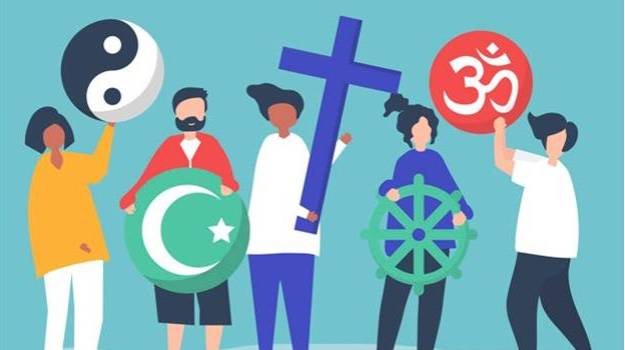Religious Fanaticism in South Asia
South Asia is the birthplace of four of the world's religions, Hinduism, Buddhism, Sikhism, and Jainism. Religion like all around the globe lies in the heart of South Asia as well. The turbulent history of all the societies of South Asia is evidence of the fundamental role that inter and intra religion, particularly the politics of 'majority' and 'minority' religions has played in shaping the idea of the nation-state. None of the South Asian countries are free from the regress of religion. The killing of Hazaras in Afghanistan, decade’s long war in Srilanka, the partition of India, Pakistan, and Bangladesh and the constant tussle between majority and minority in Nepal and Bhutan are evidence of how religious fanaticism is deadly for society.
Not only has the conflict lain within the country,
but the religious sentiment is also tied beyond the borders. If Hindu
minorities are attacked in Bangladesh or Pakistan, this tends to have
reverberations in India, harming the situation of minorities in these states.
The term 'minority complex' has found its way toward countries with dominant
ethnoreligious groups e.g. Nepal, India, Bhutan, and Bangladesh. The violence,
hatred, and bloodshed in the name of religion are not limited to
intra-religious conflict. This has moved beyond intra-religion to
inter-religion, where segregation within the same religion is equally deadly.
For, this we can look into two neighbouring countries
India and Nepal. Both of these countries have seen hara-kiri of inter and intra
religious conflict. Yet, one seems dominant than the other, India is still under
the rage of intra religious conflict between Hindu and Muslims whereas
inter-religious conflict is more overriding in Nepal with casteism.
The religious conflict in India (or then Hindustan)
has been running since the 11th century with the arrival of Mahmud of Ghazni.
The destruction of various religious shrines like Mathura and Dwarika enraged
Hindus with the detestation for Muslims. From the rise and fall of the Mughal
dynasty to the partition of India in 1947 to Babari Masjid demolition in 1992 to recent times, the conflict between the two religions has passed centuries,
and yet there is no sign of slowing down. These centuries' long conflicts have
brought nothing but bloodshed and hatred to the country. The term ‘Islamophobia’ and ‘Hinduphobia’ has
found their own meaning in India. India is the prime example that proves
religious fanaticism and religious obsession beings nothing more than
destruction.
Unlike India, Nepal has considerable peacefulness
concerning the intra-religious conflict. Various critics have claimed that
religious groups carry the shield of Nationalism to survive. But, more than
this the inter-religious conflict is more noxious in this small country. Every
religion in this country is sub-divided into numerous small groups and these
groups differ to unite for the same religion they carry. Eg. Hindus are divided
into four casts, Dalits among them are considered to be the lowest of
the cast. Yet, even among Dalits, there are at least 22 sub-caste divisions
with declared hierarchy. This division is so engraved that coming out of it has
been the greatest challenge for Nepal. Despite 14 years of the declaration of
“Nepal as untouchability free nation”, it is one of the most rampantly practised
taboos in every part of Nepal. The recent case of Rukum-west of May 23 2020
highlighted this inter-religion extremism where four boys were lynched because
of their cast.
This inter-religious and intra-religious conflict is
equally prevalent in all of South Aisa. Considering this, the right to religion is
accepted as a constitutional right by every country in one or another way.
Despite various efforts by countries from secularism to rights to minorities, what
is clear is that ‘religion’ tension is hardly disappearing from the countries
of South Asia. All South Asian countries must understand that neither religion
nor religious practices are itself caustic but the turmoil is created by toxic religious
ideologies. When religion becomes obsessive and disregard for the other
religions intensifies then the chaos in the society is inevitable, South Asia is
the best evidence of this fact.


Comments
Post a Comment